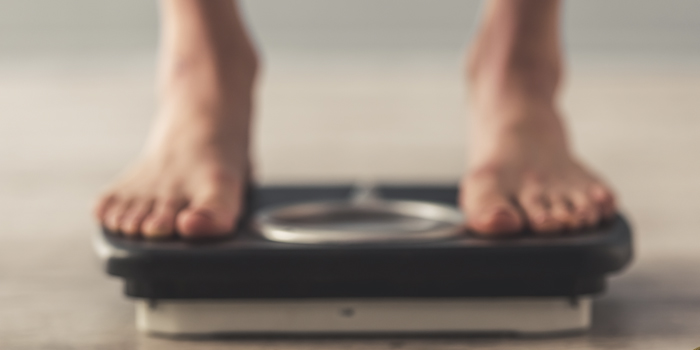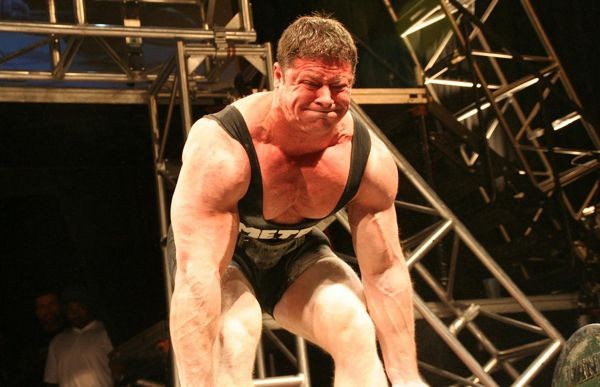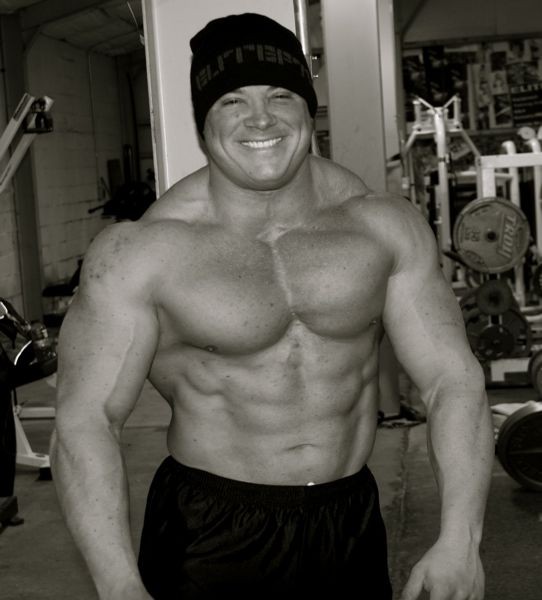
Originally published in 2012
What follows is a brief summary of the process I successfully used to cut up to 30 pounds in less than 24 hours. I went from 250 to 219 pounds for the 2007 Arnold in 22 hours. I put it all back on in less than a day, too. I did this without any type of diuretics or IVs. It was all done entirely through sweating to lose the weight and drinking/eating to replenish it. This process was designed for competitions with a 24-hour weigh-in period prior to the competition.
WATCH: Table Talk with Dave Tate — How To Find Your Perfect Weight Class
Now, I won’t kid you. This process is difficult and requires a great deal of desire, discipline, and pain tolerance. It’s exhausting, very uncomfortable, and certainly not beneficial to your health. However, I feel it’s one of the safer methods for cutting a substantial amount of weight in a short period of time because it doesn’t require any drugs (prescription or over-the-counter) and it uses the body’s natural cooling mechanism (sweating) to achieve the weight reduction. A 10 percent body weight reduction can be achieved easily and safely, and I’ve personally used this method to cut up to 15 percent of my body weight in less than 24 hours. Going above that amount significantly increases the risk to your health, and I don’t recommend it. Remember, athletes have died from excessive dehydration while trying to make weight, so this shouldn’t be taken lightly.
The key to stepping on the platform at maximum strength after cutting weight is to spend as little time as possible with your body weight at less than you intend to weigh when you lift. I’ve designed this method to achieve the desired weight loss to make the weight class limit as fast as possible and return the body weight to pre-cut levels as expeditiously as possible without the use of IV fluids.
Essentially, I use a combination of hot baths and a steam sauna to sweat out the desired amount of weight and then immediately replenish the weight by drinking large amounts of Gatorade diluted in a 1:1 ratio with water. In addition, I eat and drink copious amounts of other food and liquids. I streamlined this method to get my weight down as quickly as possible while minimizing the health risks. I also designed it to be used in a hotel bathroom because that’s where most athletes will be staying the night prior to weighing in for a competition. Most hotels have small bathrooms that can quite effectively be turned into steam rooms by closing the door and running the shower with the water turned on as hot as possible.
I prefer to do my sweating in 30-minute cycles. I start by entering a bath with the water as hot as I can get it without scalding myself, and I submerge my entire body except for my mouth and nose. I prefer the hot bath because it facilitates raising my body temperature as fast as possible and being submerged in the water is somewhat more comfortable (at least for me) than sitting in a steam room, especially a dry heat type of sauna. After 15 minutes, I get out of the bath. However, I leave the shower running on pure hot to maintain the steam and heat in the room. I don’t know what the precise temperature gets up to, but it’s typically as hot as any steam sauna I’ve been in. Next, I either sit or stand in the steam for another 15 minutes. At the 30-minute mark (bath and steam time combined), I exit the bathroom for five minutes. This allows me a break both physically and mentally and lets my core body temperature return to a more normal level. I’ll feel much better physically. After five minutes in the cool room, I return to the hot bath (I drain and refill the water each cycle to keep the water as hot as possible) and begin the process again.
The following guidelines on eating and drinking prior to and during the weight loss process with the goal to drop approximately 10 percent body weight (20–25 pounds for me) assumes an 8 a.m. weigh-in time on the day prior to the competition. At 24 hours out, I eat a normal breakfast (usually oatmeal and whey protein) and then an hour or two later, I consume a meal replacement-type protein shake. At about 20 hours out, I cease to drink or eat anything substantial until after the weigh-in, and I’m ready to begin the sweating process. The only food I allow myself during the cut is peanut butter on a slice of whole wheat bread because it provides me with carbohydrates, fat, and protein, as well as a decent amount of calories without adding any significant weight. Additionally, it’s easy to prepare and carry to a competition.
MORE: How I Lost 30 Pounds in One Day: Secrets to Water Cuts for Strength Athletes
When there’s a very short timeframe, the only thing that matters for the weigh-in is how much the food physically weighs, not the calorie content when I consume it. I allow myself two pieces of bread with peanut butter usually spaced out evenly during the cut. The first piece is typically consumed about eight hours into the cut (about 10–12 hours out from the weigh-in) and the second piece about six hours later. I always feel a renewed energy and sense of well-being after these small snacks. I don’t allow myself to drink ANYTHING during the cut because this is counterproductive to what I’m trying to achieve. Any liquid that enters the body during this time period is just that much more that I must sweat out to achieve the desired body weight. I will chew on and spit out ice chips during my five-minute breaks, but that’s as close as I come to drinking any type of fluids during the weight loss process.
I’m typically able to achieve a weight loss rate of two pounds per hour early in the cut and approximately one pound per hour toward the end of the cut as I become more dehydrated. I use this to gauge how far out I am from making weight and how much sleep I allow myself during the cut because I perform this cut throughout the night prior to the weigh-in. I try to time the weight loss to reach my goal no more than one hour prior to weigh-in. Typically, I try to get as close to the weigh-in time as possible, erring on the side of getting down a little sooner rather than a little after weigh-ins begin, so that I don’t decrease the amount of time I have to replenish my body. I don’t plan to sleep more than three hours or so during the night because taking more time lengthens the time that the body is in a depleted state. The goal is to minimize this to counteract any negative effect the cut may have on athletic performance.
Once I make weight, the first thing I do (and this is seconds after stepping off of the scale) is to drink a half gallon of Gatorade mixed in a 1:1 ratio with water. I drink this entirely within a few minutes and then continue to drink often, finishing the gallon within an hour or so. I normally eat breakfast right away, and I eat as much as physically possible. I continue to eat every two hours or so throughout the day, and I try to drink continuously. This is also a difficult process and requires much discipline. At first, due to the depleted state, drinking and eating is pleasant. However, soon you’ll feel rather full, and that’s where the discipline comes in to keep eating and drinking. You must regain all of the weight lost in order to prevent the cut from affecting your performance. I often regain 20 pounds of body weight in the first 12 hours after the weigh-in. This essentially means that I consumed a combination of liquids and food that if weighed on a scale would equal that amount. Yes, that’s a lot of food, but it’s absolutely necessary to use this method successfully.
How well does this work and how much does it affect an athlete’s strength on competition day? I used this method exclusively over the last several years, dropping a maximum of 30 pounds in 22 hours for the 2007 Arnold. The fastest rate I cut weight at was losing 22 pounds in 15 hours for the 2007 Pro Am. I always felt that I was at 100 percent when stepping on the platform, and I almost always feel better after the replenishment process than I did prior to starting it.
The key is to regain all of the lost weight. As long as the athlete does this, his strength shouldn’t be affected when he steps on the platform. However, if the athlete falls short during the replenishment process and the difference between his body weight pre-cut and post-cut is great, his performance will be affected negatively. This is both a cutting and replenishing process, and both aspects must be completed successfully in order for the athlete to compete at his best.
Written by Kroc











